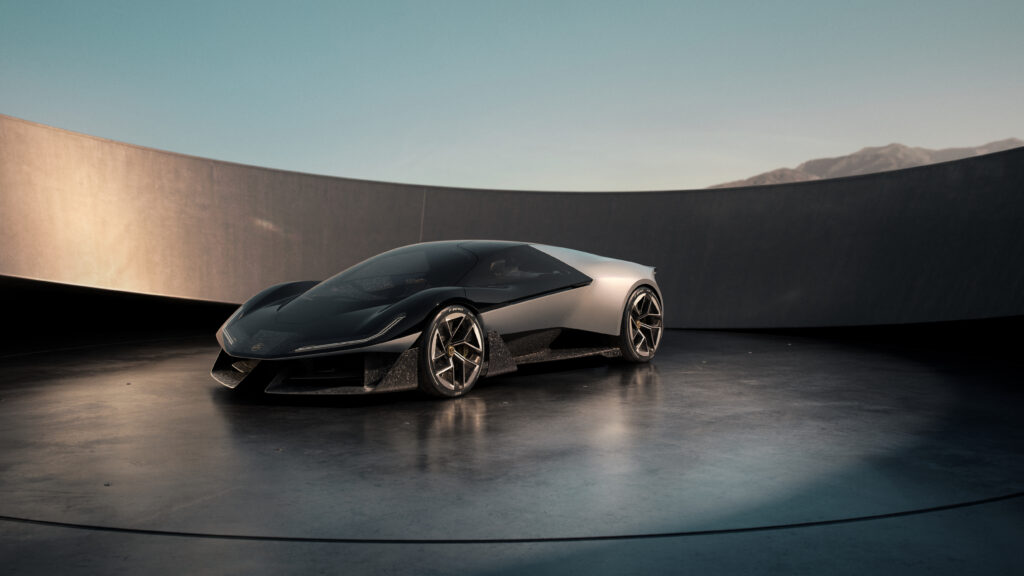
Lotus (LOT) has always been a name that evokes visions of lightweight, nimble sports cars—machines built for the thrill of the drive. In recent years, the brand has pivoted towards electrification and luxury SUVs, raising concerns among diehard fans about whether the company had strayed too far from its roots.
Enter the Lotus Theory 1, a concept car that seeks to unite Lotus’ legacy of innovation with the brand’s future in an electric and digitally connected world. It’s a return to form, not by replicating the past, but by reinterpreting it for the modern age.
The Lotus DNA Reimagined
The Theory 1 is a declaration that Lotus still values the core principles that made it legendary—lightweight design, driving purity, and cutting-edge engineering.
However, this time, the focus is not just on analog simplicity, but on integrating the digital into the driving experience in a way that enhances rather than complicates it.
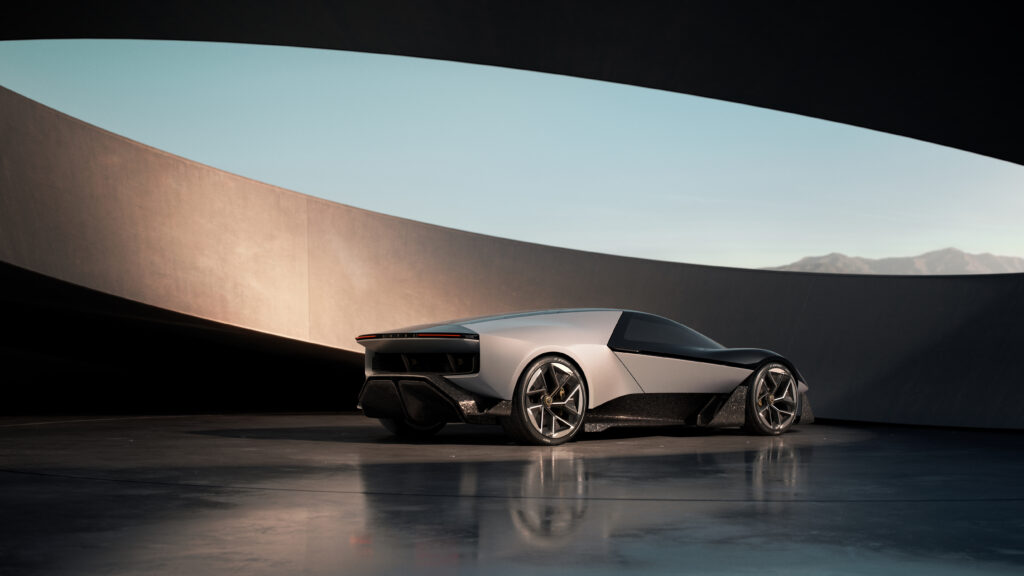
The brand’s new design manifesto, called the Lotus Theory, is built around three guiding principles: Digital, Natural, and Analogue (DNA). The “Digital” aspect promises an immersive, intuitive experience that enhances the driver’s connection to the car through technology.
The “Natural” principle centers on a design that feels human, emphasizing emotional engagement and connection between car and driver. Finally, “Analogue” represents Lotus’ continued commitment to mechanical precision and engineering performance, staying true to the roots of the brand.
A Performance Powerhouse with Purpose
At its heart, the Lotus Theory 1 is a beast of a machine. Its all-wheel-drive system is powered by a 986-horsepower electric drivetrain capable of rocketing the car from 0-62 mph in under 2.5 seconds, with a top speed of 199 mph.
The concept’s 70 kWh battery provides a range of 250 miles—impressive considering its performance figures. Despite being an electric vehicle, the car’s weight is kept under 3,500 pounds, an achievement made possible by Lotus’ use of lightweight materials and an innovative design philosophy.
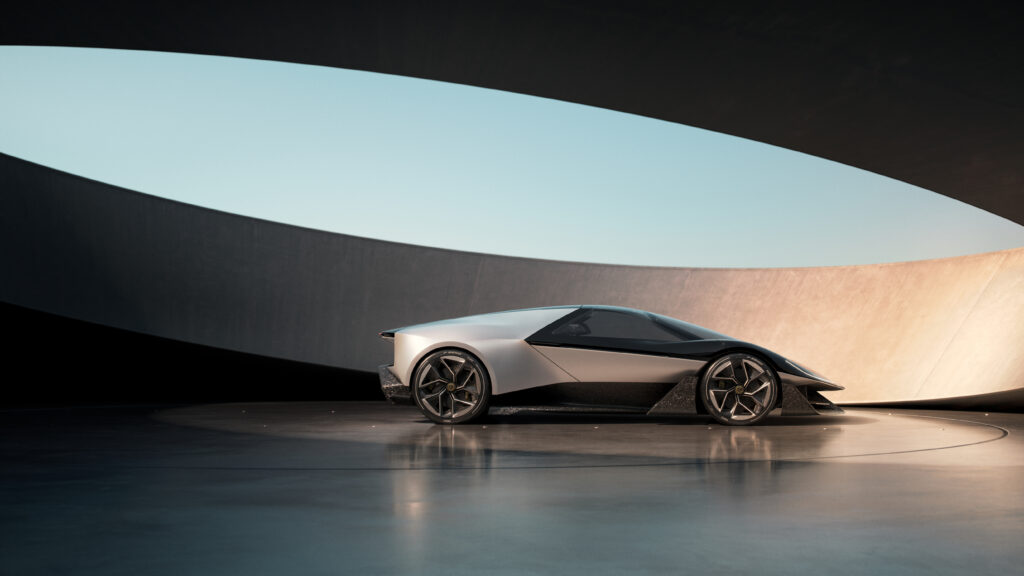
Lotus’ obsession with lightness is evident throughout the design. The Theory 1 features recycled chopped carbon fiber for the chassis, cellulose-based glass fiber for the body, and even recycled aluminum and polycarbonate for other structural components.
By utilizing only 10 main materials, Lotus aims to simplify manufacturing and create a vehicle that is both lighter and easier to recycle. It’s an example of how performance and sustainability can coexist in the modern era of automotive design.
Aesthetic Elegance Meets Functional Innovation
The Theory 1’s design pays homage to Lotus’ storied past while pushing boundaries into the future. With a sharp, wedge-shaped body and minimalist design, the car recalls Lotus classics like the Esprit, while simultaneously introducing radical new elements.
The car’s clean, aerodynamic lines are complemented by high-tech features like deployable LiDAR sensors for autonomous driving, laser-based headlights, and intricate aerodynamic elements that reduce drag and improve efficiency.
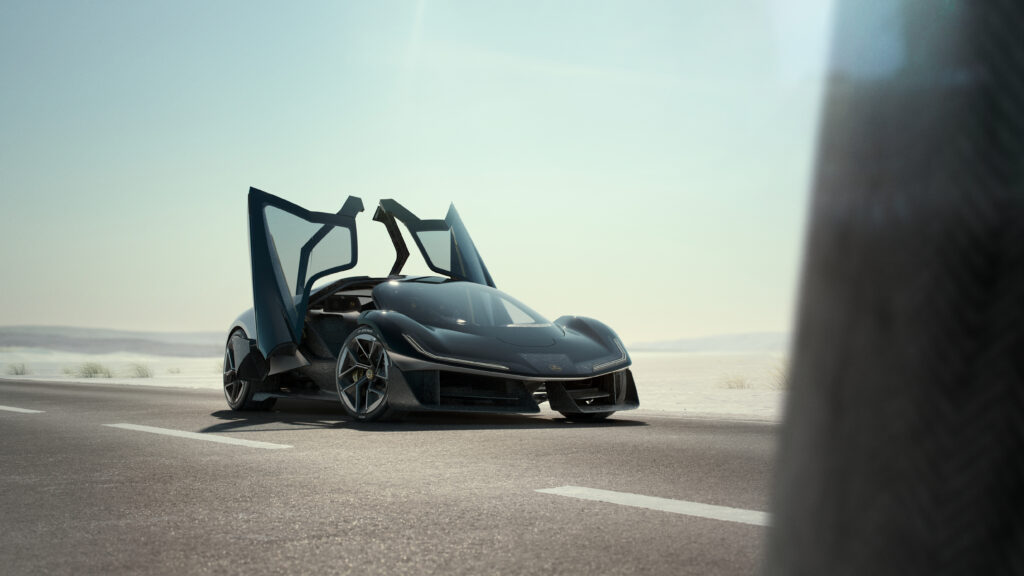
The underbody, contoured to perfection, features NACA ducts for cooling and air management, feeding air through the car to a dramatic double-hooped rear diffuser and active rear wing. This aggressive approach to aerodynamics helps the car stay glued to the road at high speeds, and it’s a nod to Lotus’ racing heritage.
Additionally, the rear wing is directly mounted to the motor assembly to ensure that the downforce is applied precisely where it’s needed.
The doors, however, are one of the most eye-catching features. They’re reverse-opening scissor doors that swing up and back—offering practicality in tight spaces while adding a dramatic flair to the car’s silhouette. These aren’t just for show; they embody the Lotus philosophy of blending form with function.
The Future of Driving: Immersive and Intuitive
Inside, the Theory 1’s cockpit is a radical departure from the norm. Lotus has created a three-seater layout with the driver positioned in the center, harking back to the legendary McLaren F1.
The seating configuration isn’t just a gimmick—it’s designed to give the driver optimal visibility and control. The interior is stark but purposeful, with tactile controls replacing bulky touchscreens, further emphasizing the car’s focus on driver engagement.
A standout feature is LOTUSWEAR, a system of adaptive, soft robotic textiles that react to the driver’s movements and provide real-time feedback. Inflatable pods in the seats and steering wheel offer haptic signals to the driver, such as when to brake or turn, enhancing the overall driving experience.
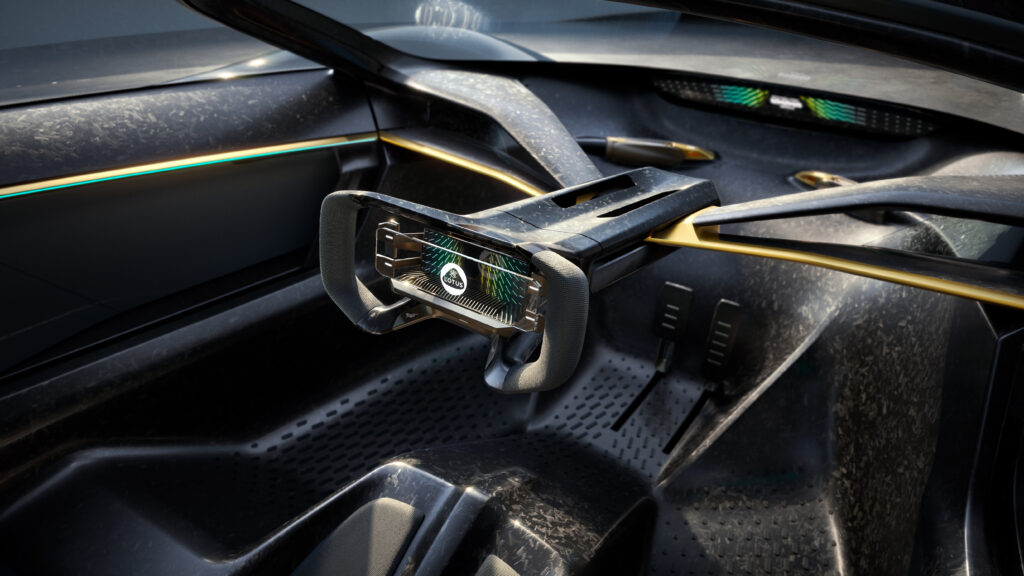
The steering wheel and pedals automatically adjust to the driver’s position, reinforcing the idea of a car that adapts to its occupant.
The minimalistic dashboard features only a small screen nestled within the yoke-style steering wheel, offering essential information without clutter.
Two HUD laser lights, placed on either side of the dash, indicate left or right turns, while RGB lights in the suspension system change color based on braking or acceleration. It’s a future-focused cockpit designed to eliminate distractions, allowing drivers to focus on the road.
Sustainability Without Sacrificing Performance
Lotus has long been known for its commitment to lightweight construction and efficiency, and the Theory 1 takes these values to new heights.
The car is built from 10 key materials, all of which are either recycled or recyclable, demonstrating Lotus’ commitment to sustainability. But this minimalism doesn’t come at the cost of performance. The Theory 1’s innovative design ensures that it remains agile, fast, and thrilling to drive.
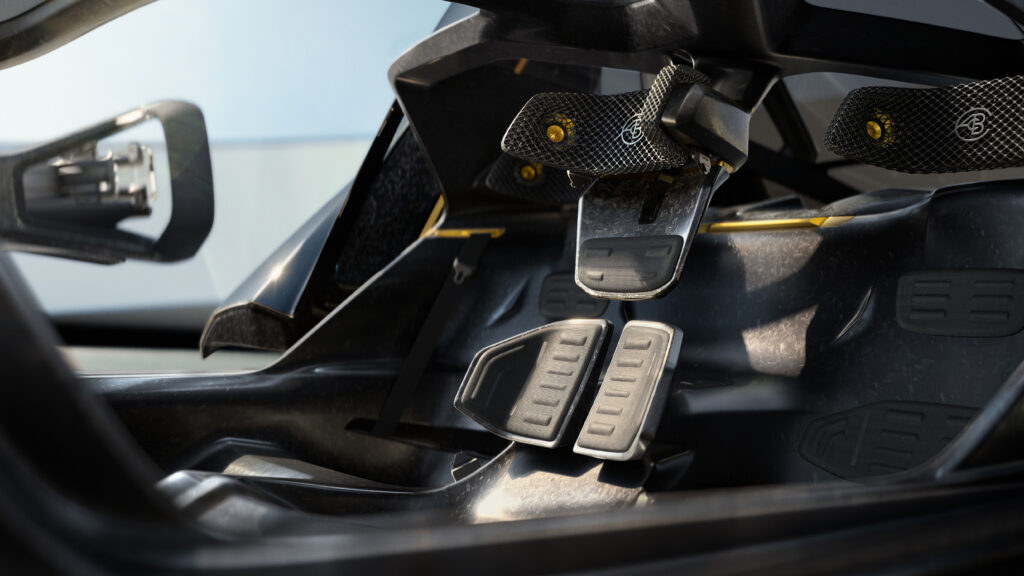
Even the car’s lighting systems, developed in collaboration with Kyocera, utilize laser-based components that drastically reduce size and weight while enhancing functionality.
With high-performance laser wire DRLs that measure less than a millimeter in diameter, and advanced LED systems integrated into the body, the car stays as lightweight as possible without sacrificing cutting-edge technology.
What’s Next for Lotus?
The Theory 1 may be a concept, but its influence will shape Lotus’ future electric cars. While the hyper-performance numbers and futuristic features may seem like distant fantasies, many of the innovations in this concept are expected to make their way into future Lotus models.
The company has ambitious plans to remain a leader in performance vehicles, and the Theory 1 serves as both a blueprint and a reminder of what the brand stands for.
While the Lotus Theory 1 may not hit the streets, its DNA will live on in the next generation of Lotus vehicles. It’s clear that Lotus is not just building cars; they’re building the future of performance driving. And for fans of the brand, that’s something to get excited about.




